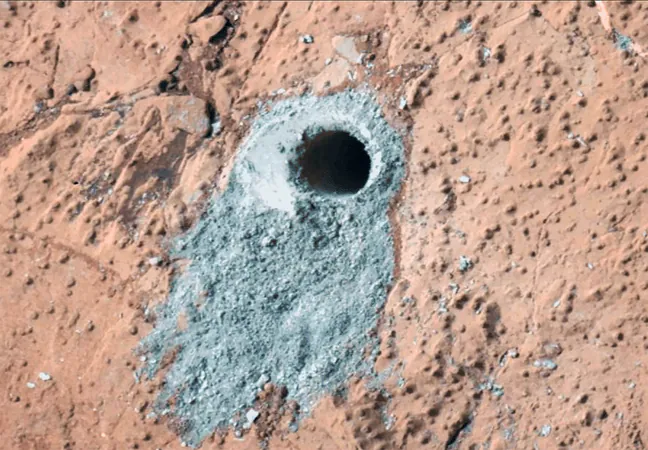
Groundbreaking Discovery on Mars: Could This Be Evidence of Alien Life?
2025-03-31
Author: Jia
NASA's Curiosity rover has made a thrilling new discovery that could reshape our understanding of life on Mars. Scientists have identified the largest organic molecules ever detected on the Red Planet, as Curiosity continues its quest to find signs of extraterrestrial life.
In an intriguing turn of events, researchers examined a rock sample that was drilled back in 2013 from a site known as “Cumberland,” located in Gale Crater. This sample is now providing fresh insights, suggesting that Mars may have possessed complex prebiotic chemistry—far more advanced than previously thought.
The Curiosity rover’s onboard laboratory, known as the Sample Analysis at Mars (SAM), discovered three organic compounds: decane, undecane, and dodecane, which possess 10, 11, and 12 carbon atoms, respectively. These compounds are believed to be remnants of fatty acids. But why does this matter?
The Significance of Fatty Acids
Fatty acids are foundational to life as we know it on Earth. They are critical components in the structure of cell membranes, enabling cells to maintain their integrity and communicate effectively. Furthermore, they serve as a crucial energy source, storing more energy efficiently than carbohydrates or proteins. The presence of these molecules on Mars suggests that complex life-sustaining chemistry could have taken place in Mars’s ancient past.
A Peek into Mars's Past
Curiosity's findings are bolstered by evidence that Gale Crater once contained liquid water, a key ingredient for life. Scientists believe this water persisted for millions of years, providing an extended timeframe for life-forming chemistry to develop in Martian environments. Daniel Glavin, a senior scientist at NASA’s Goddard Space Flight Center, emphasizes that the presence of clay, sulfur, and nitrates in the rock sample creates a conducive environment for organic compound preservation.
Interestingly, the discovery was made somewhat serendipitously. Scientists were initially looking for amino acids but instead found the heavier organic molecules. This unexpected finding raises questions about their origins, suggesting that they may have broken off from larger parent compounds during the analysis process.
Implications for Future Mars Missions
This groundbreaking discovery carries significant implications for future missions to Mars. The ability of organic molecules to withstand the planet's harsh conditions gives scientists hope for unveiling further clues to the existence of past life. However, obtaining more conclusive evidence may require returning Martian samples to Earth, allowing for advanced analysis that could settle the debate on life's presence on Mars once and for all.
Curiosity remains active as it explores intricate rock layers throughout Gale Crater, with the SAM tool playing a pivotal role in deciphering Mars's geological and biological history. Each sample retrieved adds one more piece to the age-old puzzle: Did life ever exist on Mars? And if it did, what remains of it hidden beneath the planet's surface?
The excitement surrounding this discovery is palpable, as scientists and space enthusiasts alike ponder the possibility of Martian life. Tune in for more updates on NASA’s groundbreaking explorations in our search for alien life!




 Brasil (PT)
Brasil (PT)
 Canada (EN)
Canada (EN)
 Chile (ES)
Chile (ES)
 Česko (CS)
Česko (CS)
 대한민국 (KO)
대한민국 (KO)
 España (ES)
España (ES)
 France (FR)
France (FR)
 Hong Kong (EN)
Hong Kong (EN)
 Italia (IT)
Italia (IT)
 日本 (JA)
日本 (JA)
 Magyarország (HU)
Magyarország (HU)
 Norge (NO)
Norge (NO)
 Polska (PL)
Polska (PL)
 Schweiz (DE)
Schweiz (DE)
 Singapore (EN)
Singapore (EN)
 Sverige (SV)
Sverige (SV)
 Suomi (FI)
Suomi (FI)
 Türkiye (TR)
Türkiye (TR)
 الإمارات العربية المتحدة (AR)
الإمارات العربية المتحدة (AR)